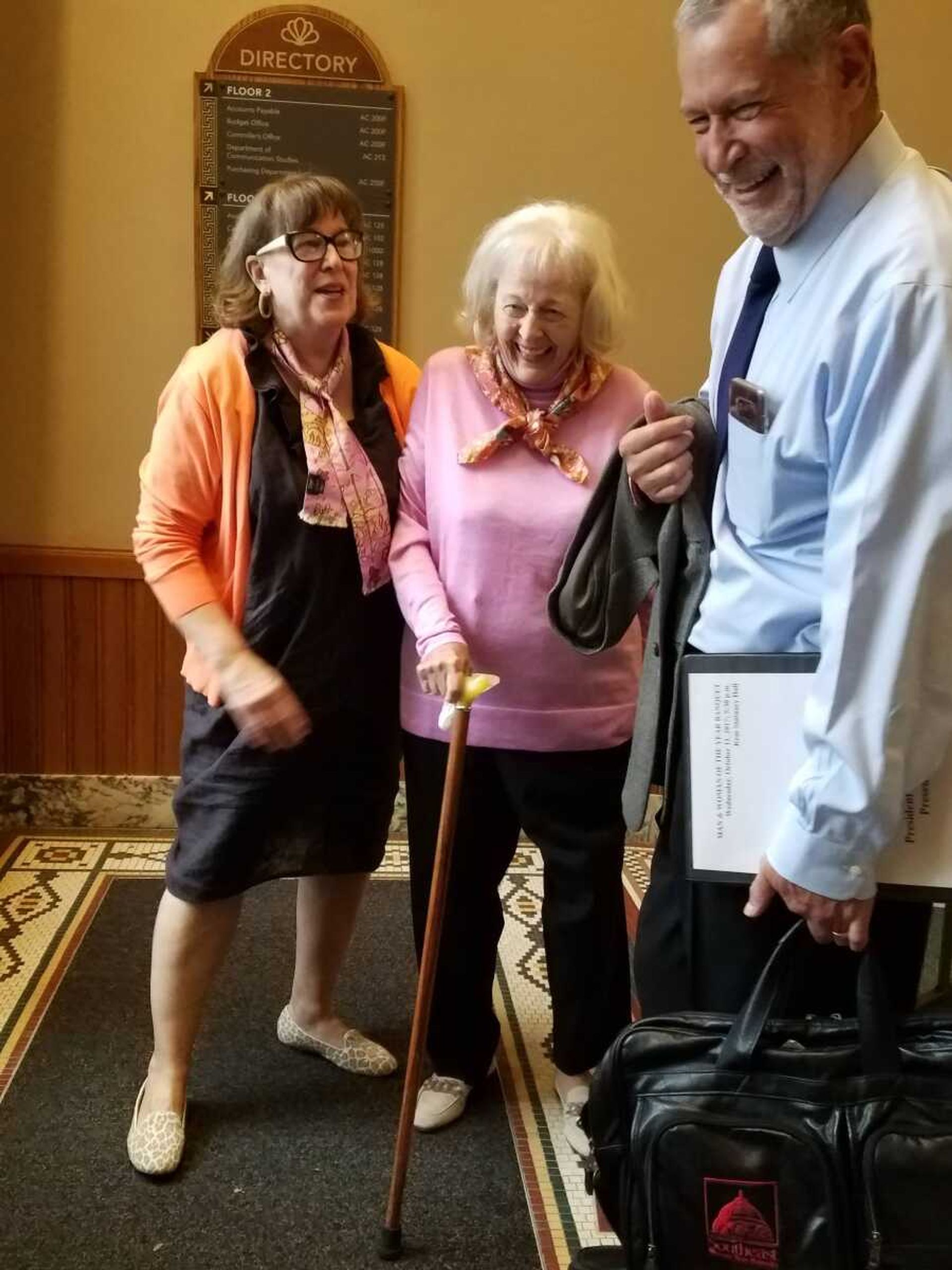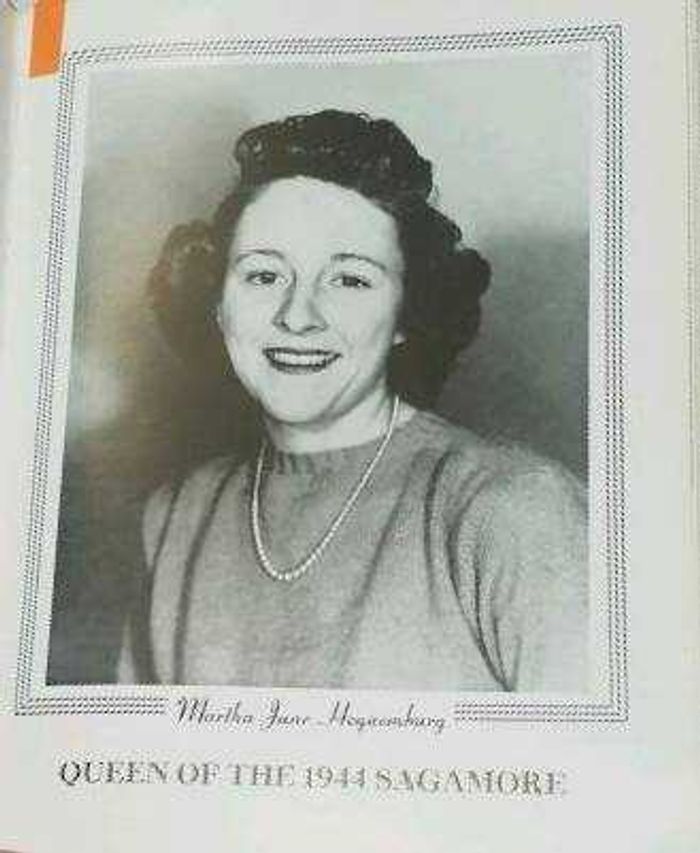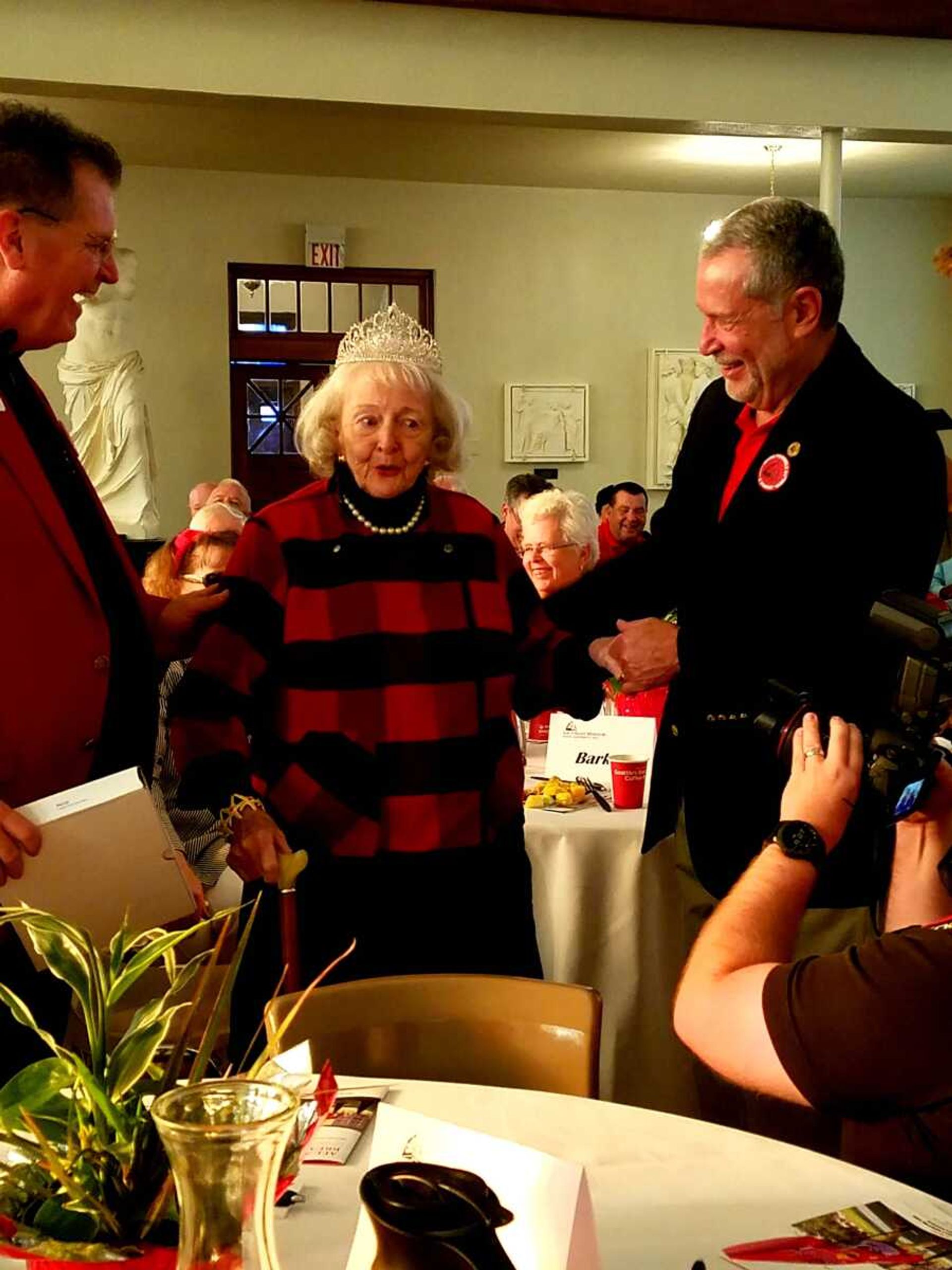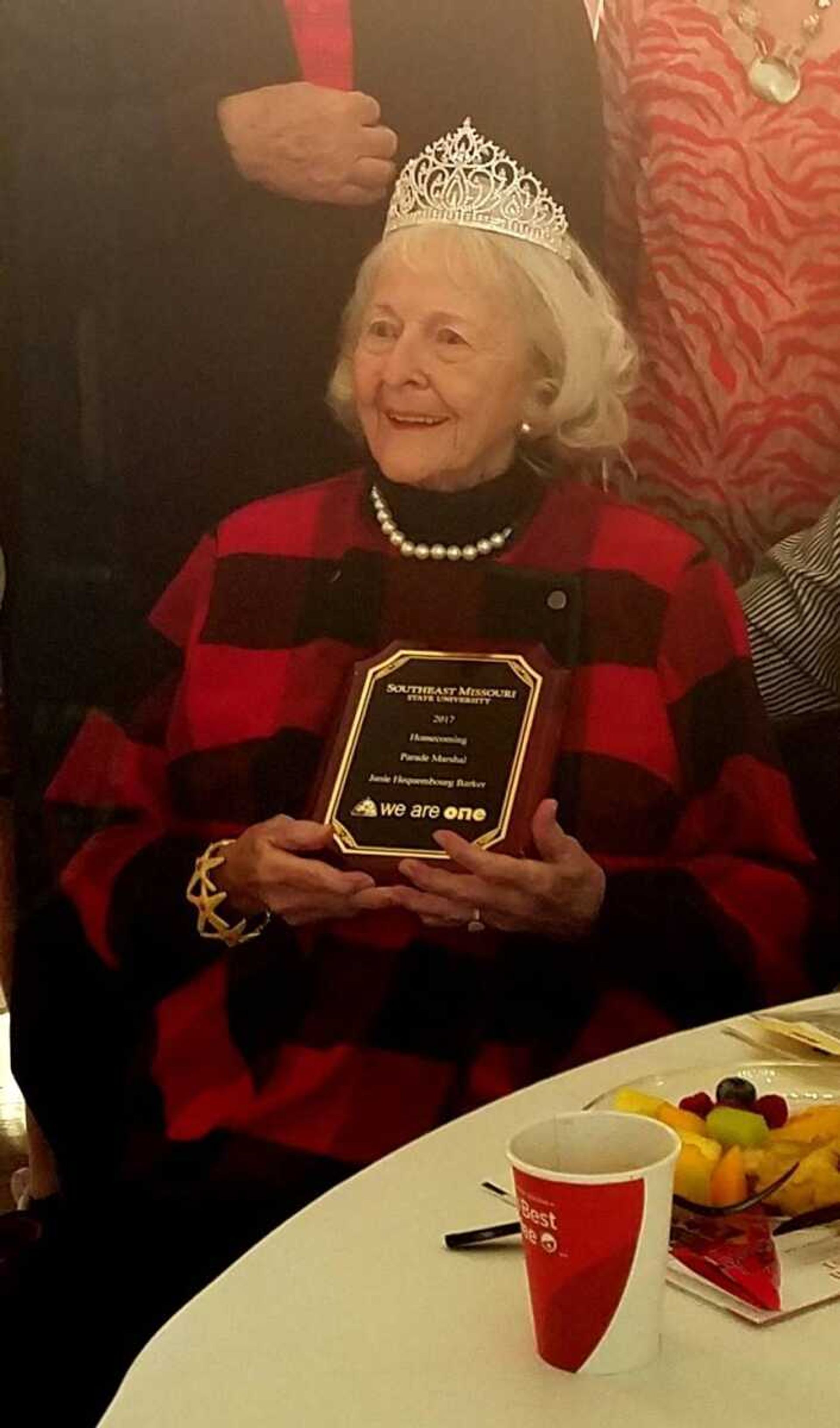Royalty Returns: Southeast's oldest living Sagamore Queen returns to her alma mater just in time for homecoming
Homecoming is the time of traveling back to one’s roots, the place where memories are made. For one Southeast alumna, the trip holds a special meaning. Martha Jane Hequembourg, known today as Janie Barker, is a 1944 graduate of Southeast Missouri State University with a bachelor’s degree in education, focusing on elementary education. ...
Homecoming is the time of traveling back to one’s roots, the place where memories are made. For one Southeast alumna, the trip holds a special meaning.
Martha Jane Hequembourg, known today as Janie Barker, is a 1944 graduate of Southeast Missouri State University with a bachelor’s degree in education, focusing on elementary education. She was also the 1944 Sagamore Queen, an honor that is today known as the Woman of the Year. At 93 years old, Barker is the oldest living Sagamore Queen, and Barker returned this year to be the 2017 homecoming parade marshal.

Barker spent years traveling around the world with her husband, the Rev. Dr. Lloyd Barker, a 1942 Southeast graduate and army chaplain, and teaching in several different states. Last week, the Jacksonville, Florida, resident made her way back to the Bootheel to participate in last weekend’s homecoming festivities.
Barker said she was pleasantly surprised to be asked to lead the parade.
“I was just floored,” she said. “I could not believe how I was chosen from all these people.”
Barker won the title of Sagamore Queen during her senior year in 1944, and the election process was a bit different than it is today.

“The sororities submitted about three names from each group, and then the final choosing came from the faculty,” she said. “The faculty had charge of the whole situation, and they took the advice of the students.”
She won the title because, according to her, she had the voice for the position.
“I think maybe one reason is [because] I had the type of voice that I could speak to a group and people could understand,” she said. “You see how loud I am.”
As for her education, she said she owes everything she knows to her time at Southeast.
“I’ve taught in five different states, and I can’t say enough about what SEMO has done for me,” she said.
Her time at Southeast was unique in that it was held against the backdrop of the Great Depression and World War II. This became an integral part of her duties as Sagamore Queen, as she and members of her court would visit communities that were negatively affected by the war.
“They would send us different places, particularly during the war time,” she said. “There were so many areas where the towns were almost going under because the men had all been pulled out into service. Schools would send us to do little programs in the rural areas that were having a hard time during the war.”
As a student, she was instrumental in working with the former college dean Vest Cleveland Myers to change the idea that students in public schools should be seated alphabetically. Myers tasked Barker with writing a paper to be distributed to local schools stating her case on the matter. Her reasoning was simple.
“If you don’t learn in college and in high school how to relate to the other students — men to women, boys to girls — in the right manner, by the time you get to high school it’s too late,” she said.
Additionally, her extracurricular activities included the Black Mask Society, the only Southeast organization at the time devoted to drama, the Baptist Student Union, Greek life and other social events that frequently took place around campus.
“Everybody danced at lunch, and the college provided a nickelodeon (a jukebox) in the gym,” she said. “It was the days when we only had one or two places to go get a Coke. When Sunny Hill Dairy opened up, they made an area where you could come in and dance at a nickelodeon, and it was Depression time, so you had to make sure your date had enough nickels to be able to dance,” she said with a laugh.
Later, when she began as a teacher, several historical events affected Barker’s career, including the civil rights movement and various wars. After traveling to military bases in Italy, Germany, London, Paris and other international locations, she taught in North Carolina at Fort Bragg before transitioning to Memphis, Tennessee, during the civil rights era originally teaching in a privileged area. However, she was made aware of a shortage of teachers in the inner city and taught there for two decades.
Barker was happy to come back to the place where so much of her life panned out. She arrived with her daughter, Martha Turley, Wednesday, Oct. 11, to visit campus and prepare for the homecoming festivities. During the days leading up to homecoming weekend, Barker toured campus, golfed with members of the alumni association and explored Cape Girardeau, which she said has changed drastically since her days at Southeast.

During Saturday’s alumni breakfast, Barker was surrounded by 11 of her family members, traveling from such areas as New York, Kentucky, California, Arkansas and Missouri, to be with her during the festivities.
At the alumni breakfast, university president Carlos Vargas re-crowned Barker and presented her with a tiara and a plaque to be shown off during the parade. She received a standing ovation from the alumni and many personal congratulations after the breakfast.
For Barker, Southeast was one of the most important parts of her life.

“I felt like, as I look back on my education, I was so privileged, because when I first started in Cape my freshman year to my senior year, our whole country had changed,” she said. “I can’t say enough about SEMO. I realized what a wonderful education I got right here.”



